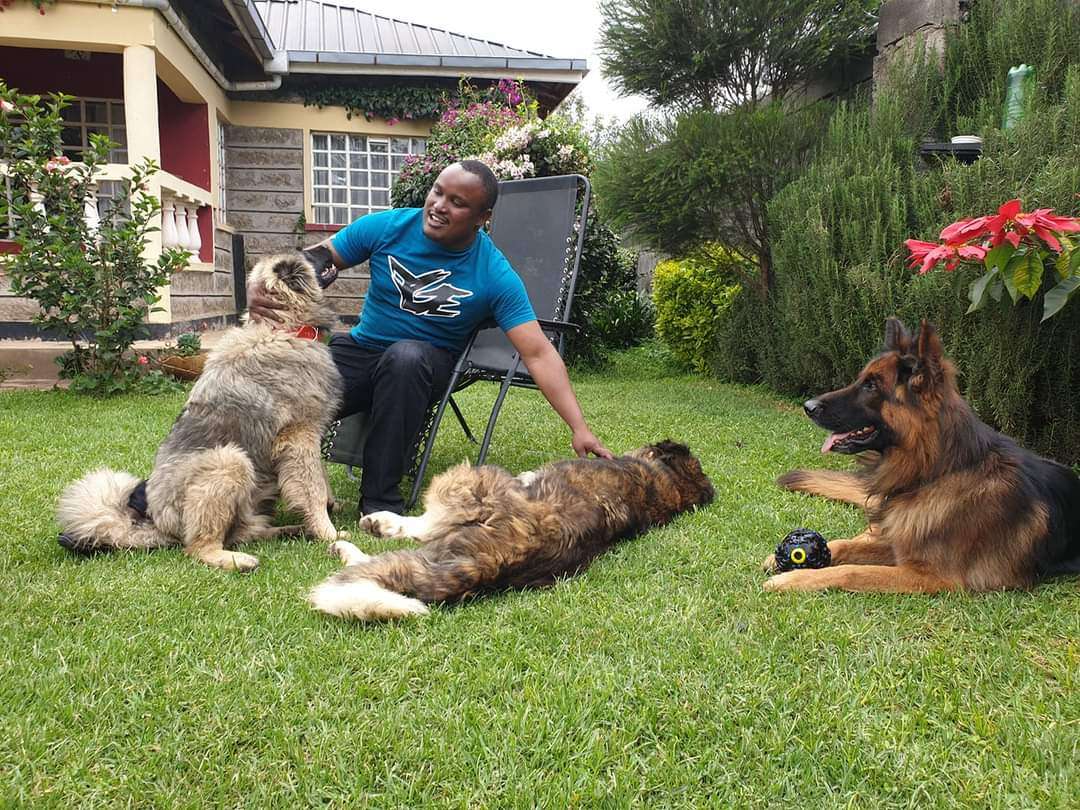Dealing with Separation Anxiety in GSDs
Introduction
Separation anxiety is a common concern among dog owners, particularly those with German Shepherds (GSDs). These loyal and intelligent dogs can develop anxiety when left alone, leading to undesirable behaviors. Understanding the underlying causes and employing effective strategies is crucial for fostering a happy and well-adjusted furry friend.
“Just as we need a little time to adapt to changes, so do our furry companions. Helping them through separation anxiety in gsd’s takes patience and understanding.”
Understanding the Separation Anxiety in GSDs
What is Separation Anxiety in GSDs?
Separation anxiety in GSDs is a psychological condition where a dog becomes stressed and agitated when separated from their owner. In GSDs, this anxiety can manifest in behaviors such as excessive barking, destructive chewing, and house soiling. It’s important to recognize these signs to address the issue promptly.
Common Signs of Separation Anxiety in GSDs
German Shepherds express their anxiety in various ways. Some common signs include excessive drooling, pacing, attempts to escape, and even self-injury. These behaviors are their way of coping with the distress of being alone.
Causes of Separation Anxiety in GSDs
Lack of Socialization
Insufficient socialization during puppyhood can contribute to separation anxiety in GSDs. haven’t been exposed to different environments, people, and other pets may struggle when their owners are absent.
Changes in Routine
Dogs thrive on routine. Any sudden changes, like a shift in the owner’s schedule or a move to a new house, can trigger anxiety in GSDs. They find comfort in predictability.
Previous Traumatic Experiences
GSDs that have experienced trauma in the past, such as abandonment or abuse, are more prone to separation anxiety. Their fear of history repeating itself intensifies when they’re left alone.
Dealing with Separation Anxiety in GSDs
Establishing a Consistent Routine
Maintaining a consistent daily routine helps GSDs feel secure. This includes regular feeding times, walks, playtime, and alone time. Gradually increase the duration of alone time to desensitize them.
Gradual Desensitization
Help your GSD get used to being alone by starting with short intervals and gradually extending them. Use positive reinforcement and rewards to associate alone time with positivity.
Interactive Toys and Puzzles
Engage your GSD’s mind with interactive toys and puzzles. These distractions can keep them entertained and mentally stimulated during your absence.
Training and Behavior Modification
Obedience Training
Enroll your GSD in obedience classes to strengthen the bond between you and enhance their confidence. A well-trained dog is often more resilient to anxiety.
Crate Training
Crate training can provide a safe haven for GSDs. Make the crate a positive space with comfy bedding and toys. This den-like environment can help ease anxiety.
Positive Reinforcement
Celebrate small victories. When your GSD remains calm during short departures, reward them with treats and praise. Positive reinforcement reinforces good behavior.
Seeking Professional Help
Consulting a Veterinarian
If your GSD’s anxiety is severe, consult a veterinarian. They can rule out any underlying medical issues and recommend appropriate solutions or medications.
Working with a Dog Trainer
A professional dog trainer experienced in anxiety-related behaviors can tailor a training plan to your GSD’s needs. They offer guidance and techniques to manage anxiety effectively.
Creating a Comfortable Environment
Designated Safe Space
Set up a designated area where your GSD feels safe. Place their bed, toys, and comforting items there. This space can be their retreat when you’re not around.
Calming Music and Scents
Calming music and pheromone diffusers can have a soothing effect on GSDs. These auditory and olfactory cues create a relaxing atmosphere.
Avoiding Reinforcement of Anxiety
Avoid Punishment
Punishing your GSD for anxious behaviors only worsens the situation. It’s important to address the root cause of anxiety rather than reacting with punishment.
Departure Cues
Dogs pick up on departure cues like picking up keys or putting on shoes. Minimize these cues to prevent heightened anxiety before you leave.
Managing Departures and Arrivals
Low-Key Departures
Avoid making departures a big event. Keep them low-key to reduce your GSD’s anticipation of being alone.
Calm Reunions
When you return home, resist the urge to greet your GSD with excessive excitement. A calm reunion helps them understand that separations are temporary.
Patience and Persistence
Consistency is Key
Consistency is vital in managing separation anxiety. Stick to the strategies you’ve chosen and be patient. Progress may be gradual, but it’s achievable.
Celebrate Progress
Acknowledge your GSD’s progress, no matter how small. Celebrate achievements and adapt your approach as needed.
Conclusion
In conclusion, dealing with separation anxiety in German Shepherds requires empathy, dedication, and a well-structured approach. By understanding the causes, implementing effective training methods, and seeking professional assistance when necessary, you can help your GSD overcome their anxiety and lead a happier, more relaxed life.
FAQs
- Can separation anxiety in GSDs be completely cured? While complete cure is not guaranteed, many GSDs show significant improvement with proper training and management.
- Is crate training suitable for all GSDs with separation anxiety? Crate training can work well for some GSDs, but it’s essential to introduce it correctly and consider individual preferences.
- How long does it take to see results from behavior modification? Results vary, but with consistent effort, you may start noticing positive changes within a few weeks.
- Can I leave my GSD alone for an entire day after training? Gradually increasing alone time is advisable. A full day alone might still be stressful, even after training.
- Are there supplements that can help alleviate separation anxiety? Some supplements, like chamomile or L-theanine, may have a calming effect. Consult your vet before trying any supplements.
- Is it better to have another pet for companionship? While another pet can provide companionship, it’s not a guaranteed solution. Proper training is essential regardless.
- Can early socialization prevent separation anxiety? Early socialization can contribute to a dog’s overall well-being, but other factors also play a role in separation anxiety development.
- Will ignoring my GSD’s anxious behavior make it go away? Ignoring the behavior might worsen anxiety. Address the root cause and implement positive training methods.
- Can GSDs develop separation anxiety later in life? Yes, changes in routine or traumatic events can trigger separation anxiety in GSDs
- Is professional help necessary for mild cases of separation anxiety in GSDs ? Professional guidance can still be beneficial in mild cases to ensure you’re taking the right steps for your GSD’s well-being.










